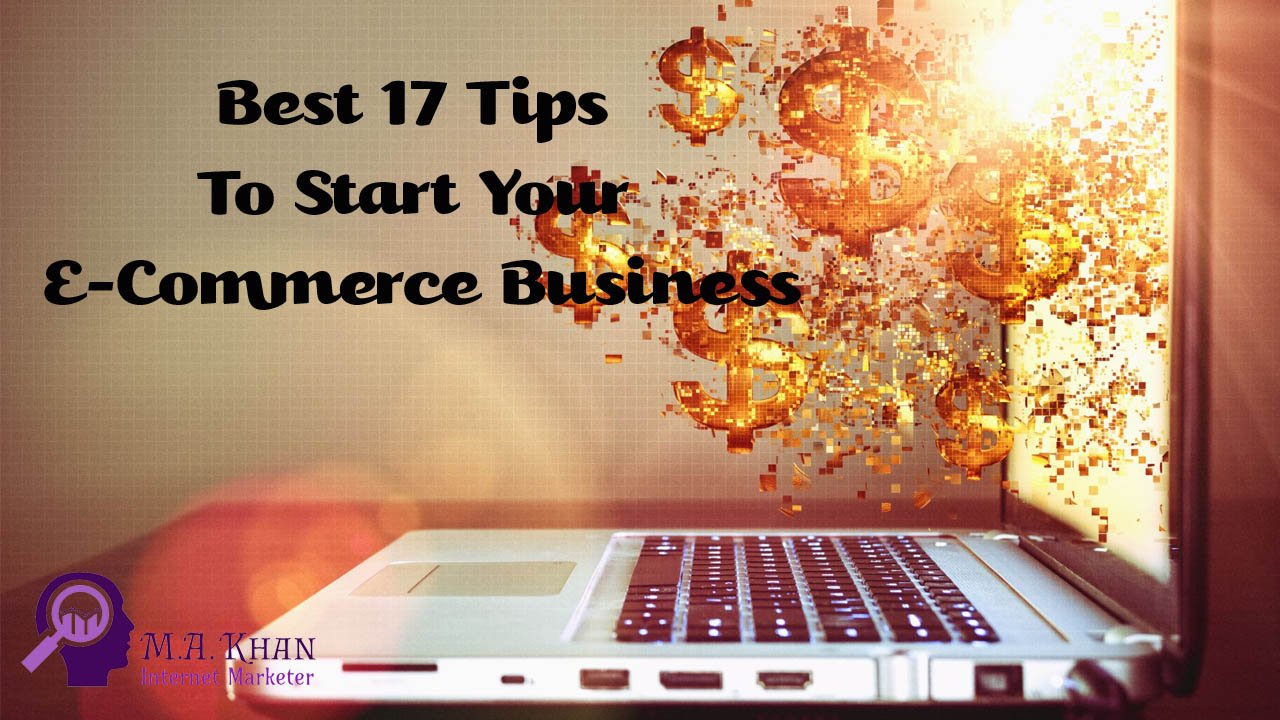When venturing into the world of e-commerce business, one of the critical factors that aspiring entrepreneurs must consider is the cost of building an e-commerce website. Understanding the intricacies of e-commerce business website costs is essential for individuals looking to start their own online business.
While the expenses can vary depending on various factors, such as platform selection, design complexity, and desired functionalities, having a clear grasp of the potential costs involved is crucial to effectively plan and budget for your e-commerce venture.
By exploring tips and insights related to e-commerce website costs, you can embark on your entrepreneurial journey with confidence and ensure a solid foundation for your online business.
Have you ever come to a bar or restaurant and had a note framed or hanging on the wall? This was probably the entrepreneur’s first self-earned money. His monument. His trophy. So you want a picture frame too? Can you have: We’ll show you 17 ways to earn your first money in e-commerce – from scratch.
- Best 17 Tips To Start Your E-Commerce Business
- 1. Tell friends and family about your E-Commerce Business
- 2. Use Google Adwords for your E-Commerce Business
- 3. Give away your products
- 4. Create E-Commerce Business Infographics
- 5. Your products on price comparison portals
- 6. (Product) Videos
- 7. Also, sell on eBay or Amazon
- 8. Please provide something “love”
- 9. Give interviews
- 10. Write a brilliant blog
- 11. Use the product ads from Amazon
- 12. Distribute business cards
- 13. Live social media
- 14. Distribute vouchers
- 15. Use a partner program
- 16. Facebook Ads
- 17. Be patient – and count
- 18. Buying Habit
Best 17 Tips To Start Your E-Commerce Business

When starting your e-commerce business, efficient shipping management is crucial for success. One of the key tips to streamline your shipping process is to invest in reliable shipping software for small businesses. With the right shipping software, you can easily manage orders, track shipments, and provide accurate shipping quotes to your customers.
It helps you save time, reduce errors, and enhance customer satisfaction. Look for shipping software solutions that offer features like real-time tracking, automated label printing, and integration with major carriers. By leveraging the power of shipping software, you can optimize your e-commerce operations and deliver a seamless shipping experience to your customers.
1. Tell friends and family about your E-Commerce Business
Tell everyone you know (and even their dog) about your new E-Commerce Business website. Convince her to share your link on Facebook, Twitter, and Co. and do some advertising for your shop. You’re not asking them to buy something from you, just asking them to share your online store on their network – that can be very valuable.
2. Use Google Adwords for your E-Commerce Business
Pay-per-click (PPC) marketing is the purchase of site traffic. Use AdWords to direct targeted traffic to your E-Commerce Business store. Sure, filtering out the right audience from an Internet audience can be tricky, and if you pay per click, the costs add up quickly, so be sure to get familiar with Google Adwords.
Also very important: If you are spending money on AdWords, be sure to use an analysis tool to determine which ad brings you which results. Google offers free Google Analytics for this. Set website goals (such as your shopping cart) to measure which visitors buy.
3. Give away your products
Of course, at a first, glance, giving a gift does not seem the right way to get your first bill. But there are clever ways to turn so-called giveaways into real sales:
- You can win hundreds, even thousands of email subscribers, for example, if you run a raffle before your store opens. Ask your visitors to sign up and give them a discount if they share your raffle in their social media environment. Once your website goes online or your sweepstakes ends, you then send a mail with the discount promotion.
- Let’s say you are selling a technical device. Then try to find reporters, bloggers, and magazines who write about these products and send them a free copy with a brief description of your listing and your new online store. Big companies have always done that – and it works if you do it right. But do not expect too much: even if you only get one item, you can claim the campaign as a success.
So you sell with shop widgets on influencer pages
4. Create E-Commerce Business Infographics
Informative graphics, better known as infographics, display data in a visual way that is easy to understand. This form of data communication has become very popular. As a result, such graphics are often shared and linked. So hire a designer to help you design an infographic that suits your products.
For example, if you sell hiking boots, you could work with a hiking trail as an optical element. There are also a lot of offers on the net to create infographics: templates or complete implementation services. In any case, you can be very inspired here.
Once created, the infographic can then be published in a paid message service. Whatever publication your graphic picks up and also publishes – the readers are all linked to your shop.
5. Your products on price comparison portals
Sites such as Idealo.de, cheaper.de, or ciao.de collect product information and prices so that visitors can find them – and of course, also be able to easily compare prices. So, if you put a little money in your hand here and put your products on these sites, it could bring a lot of new customers to your store – and thus secure your first sale.
6. (Product) Videos
A video can be a very powerful way to promote a new business, and in the case of an e-commerce company, even increase sales.
For the production here naturally helper from the industry. But today we are all used to mobile videos as well, which means that the quality does not necessarily have to be “glossy”. But the content must be right: exciting, funny, always informative, and authentic should be such clips.
7. Also, sell on eBay or Amazon
Online merchants can easily sell through a large number of multi-channel distribution channels. Sites like eBay or Amazon Marketplace offer this. If you already have a working sale for your shop, then the presence in other marketplaces often means not much work but opens up new customer groups.
Just offer a 10% discount voucher for the first sale on your E-Commerce Business site and look forward to a first or even second sale. Or you go the other way – start on a marketplace and add your shop in the second phase.
8. Please provide something “love”
In the beginning, dealers and manufacturers can also help you, as a new shop owner, for example, to put on dealer lists or to mention your shop in their social media environment. Just ask them if they would like to support you in your setup.
9. Give interviews
Traders are often experts in a particular industry. For example, if you sell handmade shirts and prove yourself competent in menswear, why not feed the trade media with your expert commentary? Journalists are often looking for industry experts. Publishing your expert opinion makes it a breeze to talk about your own business. So try to build up a network of such journalists and above all cultivate them sustainably.
10. Write a brilliant blog
Content marketing is currently one of the most important techniques for increasing traffic to your website, and visitors are potential customers. By consistently delivering high-quality content—such as a “how-to-be-me” blog post—you gradually gain more and more trust from your customers, turning them into regulars.
Always provide engaging, visually appealing content, showcasing your products in action or offering a behind-the-scenes look at you or your store. By utilizing content marketing tools, you can streamline and enhance your content strategy for even greater impact.
11. Use the product ads from Amazon
Online merchants also can place ads on Amazon – on a contextual product page. The visitors are already on Amazon anyway and most likely want to make a purchase. The conversion rate is therefore often higher with these ads compared to traditional PayPerClick.
12. Distribute business cards
Every shop owner should own business cards. If you have them made, make sure they are stylish and reflect your shop design. Keep in mind that your shop URL should be central and well-visible. And again the network helps because there are many providers for business card production, many with design templates. Once the cards are there, put them in EACH hand!
13. Live social media
By now, you’ve probably read half a million blogs or articles about social media marketing. Why? Because it works. Increase your presence on all the usual channels: Twitter, Facebook, Instagram, or Pinterest. Speak or write about your industry, comment on discussions that are already underway, and gradually you will be recognized as an influencer or thought leader.
It’s amazing how much traffic you can generate through social media. As you continue to show presence, it will not be long before your followers become your customers.
Read Also: Best Instagram Selling Tips – How and what can you sell on Instagram?
14. Distribute vouchers
All love bargains. You may be surprised how many users type in Google “coupon code ________”. To create your coupon code for your E-Commerce Business, go to deals.com or couponcodes.com and post your deal. Write something like, “Wow, I just found this coupon for www.makhan.org”
Online vouchers are a sales driver!
15. Use a partner program
Especially small companies with small advertising budgets have the opportunity with affiliate marketing to open up new customer groups without great expense. The key advantage is that affiliate marketing is remunerated based on success. This means that the affiliate (partner) integrates the advertising material on its website and only receives a commission from you when it comes to action. This can be a click, a lead (for example, a subscription to a newsletter), or a sale.
So your shop is present on the whole websites of the affiliates but pays only a commission if the partner has also brokered a potential customer. You can either run a partner program on your own or start with an affiliate network. There are too many different affiliate offers.
16. Facebook Ads
Facebook advertising can be a great way to access a specific audience. The ads are displayed to specific groups of users who are particularly active. If your ads contain creative content and are well-tailored to their audiences, they are often tagged, commented on, and shared with “Like Me.” Similar to Google AdWords, advertising on Facebook is calculated by click-charge.
17. Be patient – and count
If you were to open a store or restaurant, you certainly would not expect your business to become profitable in the first few weeks. The same goes for e-commerce too: it just takes time – so be patient. But keep a close eye on the book and calculate a plan by when to reach the profitable zone.
18. Buying Habit
Brands and dealers skillfully leverage changes in consumer buying habits to their advantage. They meticulously observe and analyze shifts in preferences and behaviors, allowing them to customize their marketing strategies and product offerings accordingly.
Whether it’s adapting to the surge in online shopping or capitalizing on the growing trend of eco-consciousness, brands, and dealers seize these changes as opportunities to enhance customer experiences and drive sales.
By closely monitoring evolving buying habits, they can identify emerging trends, innovate their products, and craft targeted marketing campaigns that deeply resonate with consumers. This proactive approach not only enables brands and dealers to meet market demands but also positions them ahead of the competition, fostering customer loyalty and propelling business growth in the process.





